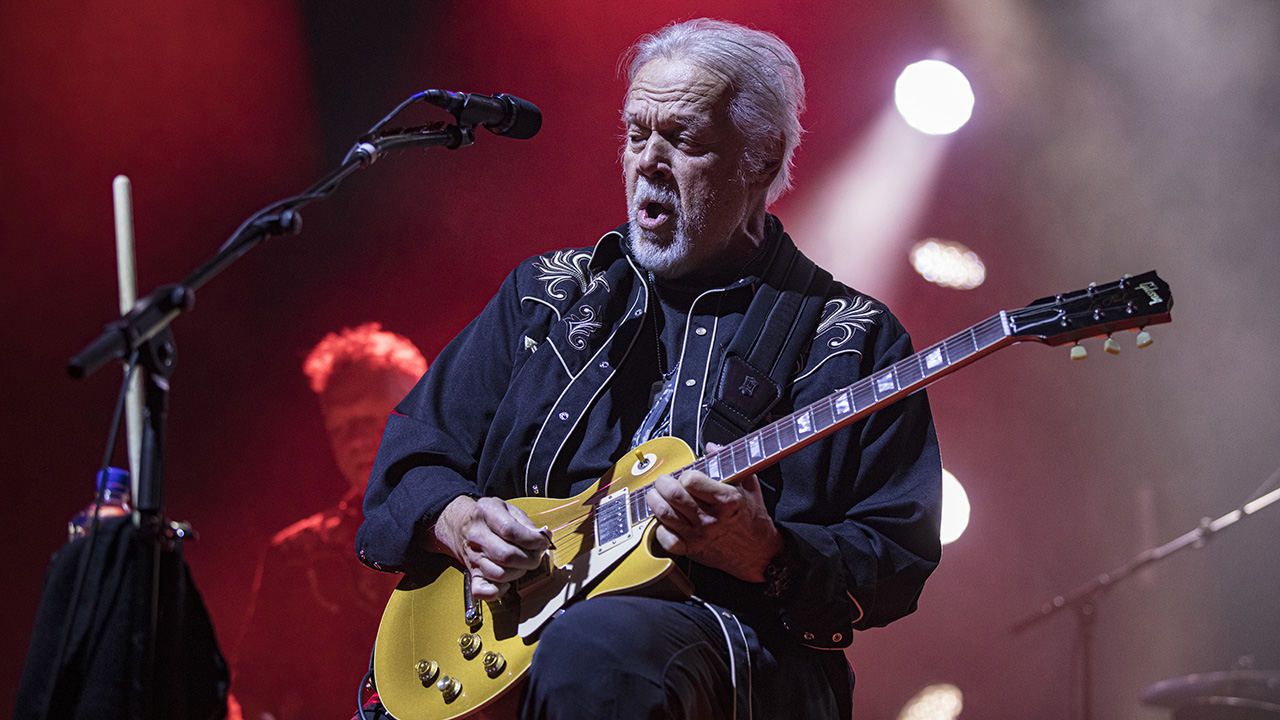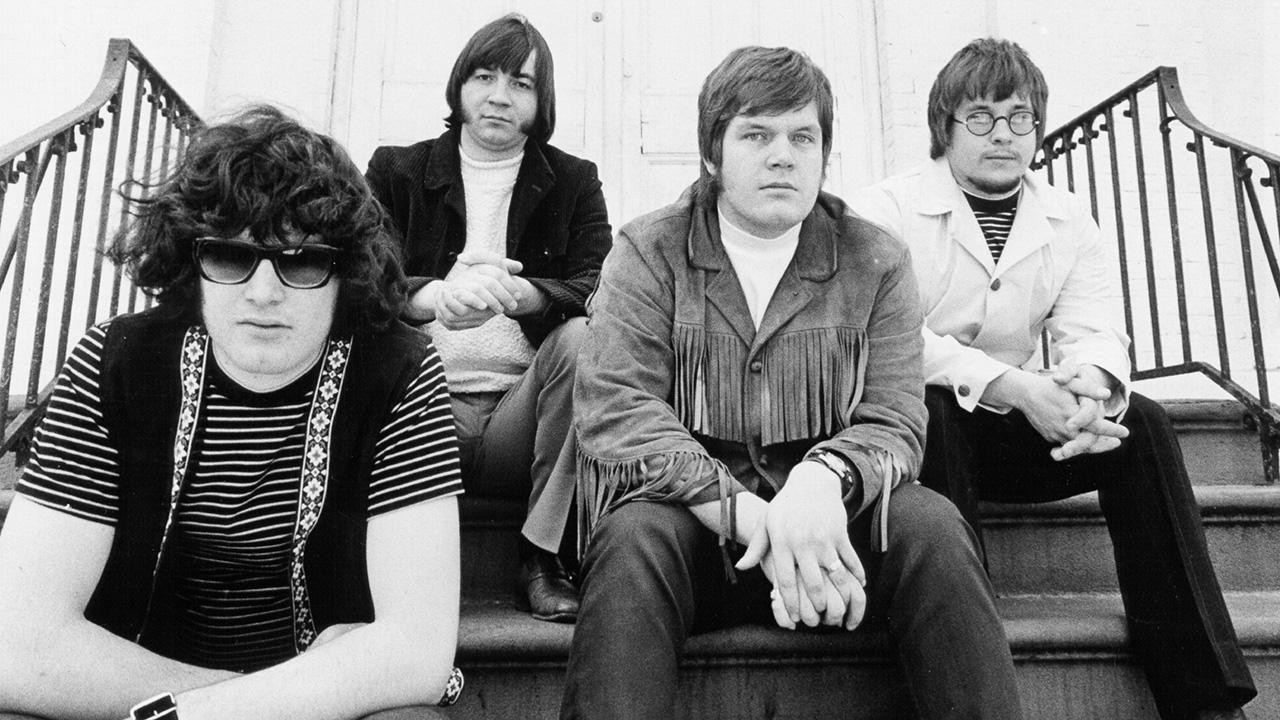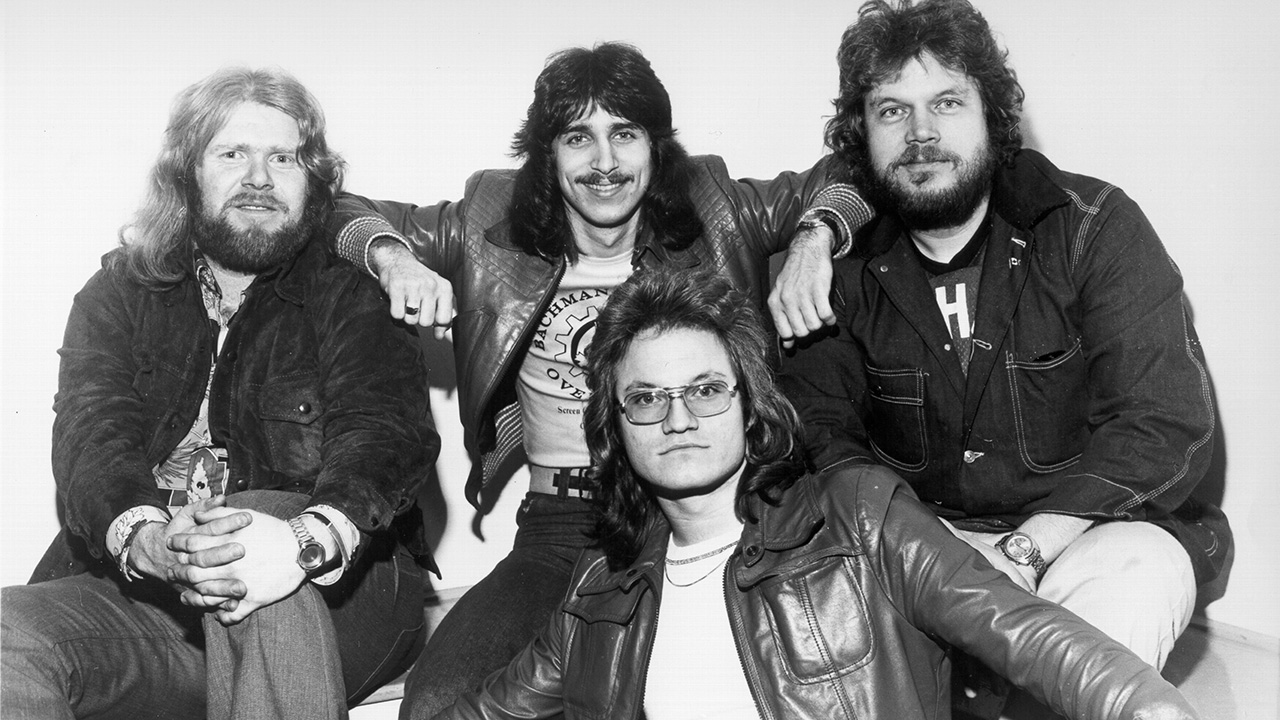“I felt like I’d stumbled upon this magical sound radiating off people’s turntables… my Strat and Gretsch together had this sound of one guitar, even when it was two”: As Randy Bachman prepares to part with his guitar collection, he’s still burning bright
The 80-year-old Guess Who and Bachman-Turner Overdrive pioneer is hitting the road with extra energy after hearing remastered live recordings: “We were on fire! We went to Japan and played as good as Led Zeppelin”

With The Guess Who, Randy Bachman was an unassuming Canadian guitar hero who authored the riff-heavy, slow-burning, solo-filled cut American Woman, which hit No. 1 before he split the scene for health-related reasons at the height of the group’s fame.
Most thought he was crazy – and perhaps he was. But he later formed Bachman-Turner Overdrive alongside Fred Turner, leading to further success via tracks like Let it Ride, Takin’ Care of Business, and You Ain’t Seen Nothing Yet. The latter of the three, a ‘throwaway track,’ also landed at No. 1.
Bachman didn’t stick with BTO either, but he’s weaved his way in and out of the band’s history, just as with The Guess Who. These days, he’s pulling double duty with both groups, even though BTO’s ranks have thinned with the deaths of Robbie Bachman in January 2023 and Tim Bachman three months later.
The band hasn’t released any new music since 1984’s Bachman-Turner Overdrive – but that’s about to change. “We’re working on a new album because the fans are asking for it,” Bachman tells Guitar World. “We’ve got labels interested so we’re talking. It will be a great year after being shut down.”
At age 80, he’s also planning to part with his collection of 200 guitars. “The big thing is that my ’57 Gretsch, which was stolen in 1978, was recovered,” he says. “A guy in Japan had it, and I traded him one of my other guitars to get it back.
“Getting that guitar back and playing it so much got me thinking about the other guitars in my possession, so I’m working with Julien’s Auctions in New York City, and we’ll sell some. One will be my ’59 Les Paul, which is too heavy for me now. A few of my Strats are going too. I was gonna leave my kids in charge of it all, but they said, ‘Dad, we don’t want all these guitars!’”
Despite recent health scares, Bachman isn’t slowing down – BTO’s legacy means too much to him. But he recognizes that time is no longer on his side. “I was recently looking back at some shows we did at Budokan in Japan that we’ll be remastering,” he reports.
Get The Pick Newsletter
All the latest guitar news, interviews, lessons, reviews, deals and more, direct to your inbox!
“Man, we were on fire! We went to Japan and played as good as Led Zeppelin. We were just incredible back then. Seeing that and hearing how we played makes me so happy that I can still go out and do it again. I’m looking forward to this year.”
You played violin early on. What led you to give it up in favor of the guitar?
“My parents figured the only way for me to get out of the ghetto we lived in was to play sports or pick up an instrument. I wanted to play drums, but they felt they were too loud, so I said, ‘How about violin?’
“I started with the local children’s classical conservatory with 85 kids, and quickly found that things didn’t make sense to me. I went home and told my parents, ‘I quit. I never want to play the violin again. I can’t read the music.’
“The following Sunday, Elvis Presley came on TV, and I was so taken aback by this new thing called rock ’n’ roll. I’d never seen anyone move like that, and I loved the guitar he was holding. I later found out that it was Scotty Moore’s fingerstyle playing that I was attracted to.”
How did your childhood friend, Lenny Breau, shape you as a young guitarist?
“Lenny was a year older than me; we became friends when I was around 15, when his family moved to Winnipeg, Canada from Maine. They lived in a trailer and he would play at local spots. He was a little guy – maybe 5ft 6in – but his playing was massive. He was another guy who played with his fingers.
“I said to him, ‘Whatever you’re doing, I wanna do it too.’ Lenny said, ‘Get a record by Chet Atkins, and once you can sing that in your head, you’ll find the notes and you can play them.’ He was right – it turns out that I can play most of what I hear.”
Tell me about being taught how to play How High the Moon by Les Paul.
“That was a riff I struggled with. I was used to being able to find all the notes myself, but that one left me unsure. Les Paul had a gig at a local nightclub in Winnipeg when I was about 16. I was able to get a ticket – but they told me I wasn’t allowed in because I was underage. The only way to get in was if my parents were there and we ordered dinner.
“So I’m standing outside, and a big black Cadillac pulls up, the window rolls down, and it’s Les – who said, ‘Hey, kid, what are you doing out here?’ He saw I was holding his record under my arm and said, ‘Are you here for the show?’

“I said, ‘They won’t let me in.’ He says, ‘I’ll get you in. Come with me.’ And he hands me his guitar, I carry it to the door, and Les tells the guy, ‘This is my little helper.’ So he got me in and I watched from behind.
“After the show he said, ‘Is there anything I can do for you?’ And I said, ‘Can you teach me How High the Moon?’ So he did.”
Once you formed The Guess Who, what guitars defined the band’s sound?
“My first real guitar was a Silvertone from a Sears catalog. I still have it. But I wanted a big orange Gretsch 66120, like Chet Atkins played. Those stood out compared to the sunburst Fender Strat and Les Pauls. So I got one of those, and eventually got a ’59 Gibson Les Paul 'Burst, on which I wrote a lot of The Guess Who's stuff. But that guitar was almost 14 pounds, so I only played it in the studio.”
Is that the gear you used to record American Woman?
“A big part of the sound was me harkening back to my violin days, and the way I approached it was a very early version of what people call the ‘woman tone.’ I used these sorts of violin lines, and the lead of American Woman was this big, fat, slow sound with great tone. I used the ’59 Les Paul – which wrecked my shoulder!”
Was your rig similar once you formed Bachman-Turner Overdrive?
“Using that Les Paul led me to finally cave and buy a Strat, which I used on most of the rhythm tracks in Bachman Turner Overdrive for different tonality and texture. I’d still use the Les Paul and the Gretsch for solos, but everyone needs a Strat in their toolbox.
“My approach with BTO was different because if I was going to leave The Guess Who – which people told me I was crazy for doing since we had a No. 1 record – I needed the band to be different. The sound of BTO was always supposed to be heavy-duty rock ’n’ roll because Fred Turner has this big voice.
“A big part of the sound was my switch to Strats. That was a much lighter guitar. And the other thing was Norm Sundholm, the bassist from The Kingsmen, gifted me an early Sunn Model T amp, which had these tubes with huge boosts in them.”
How did Takin’ Care of Business come to be?
“That song dates to my Guess Who days, when it was called White Collar Worker. It was supposed to be like The Beatles’ Paperback Writer or Chuck Berry’s Johnny B. Goode – telling the story of an everyday guy. The guys in The Guess Who hated it, but I ended up revisiting it with BTO; I based the lyrics on following a guy around New York City, but it was still called White Collar Worker.
“It became Takin’ Care of Business one night when Fred couldn’t sing, so I had to sing some songs at our show. I didn’t know many songs, so we ended up doing this White Collar Worker thing, and on the spot, the line ‘takin’ care of business’ was added. So it was a steady evolution.”
And when it came time to record it, what gear did you use?
”I used a small Garnet Herzog amp, which was like my secret weapon. It was this little 30 watt amp, and I paired it with my orange Gretsch. That’s why it has that sort of echo-like sound – the hollow body of the Gretsch combined with that little amp facing the wall made some cool sounds.”
How about Let it Ride, which was recorded during the same sessions?
“For Let it Ride I picked up my Stratocaster. It had a much cleaner sound. I’d used my ’62 hardtail Strat for the rhythms on Takin’ Care of Business, and I wanted some of that sound for Let it Ride.
“I plugged the Strat directly into the mixing board, then I brought my Martin D-35 in for some layering, which gave the track this great, big, booming sound. I used the Sunn amp rather than the Garnet.”

Was your setup mostly the same when you recorded You Ain’t Seen Nothing Yet later in the ‘70s?
“I had a very similar rig for that. It was the same guitar combination because I felt like I’d stumbled upon this magical sound radiating off people’s turntables. There was just something about my Strat and Gretsch together that had this sound of one guitar, even when it was two.
“It was recorded quickly and my guitar isn’t even in tune! You Ain’t Seen Nothing Yet wasn’t even supposed to be recorded, but the label wanted something for top 40 radio, so we added what we thought was a throwaway cut – and it became a No, 1 song that sold two million copies.”
How do you measure the importance of The Guess Who and Bachman-Turner Overdrive on guitar-driven rock music?
“I came on the scene at a very cool time. The Guess Who was during the pop music era, then it evolved into ‘60s psychedelic rock. And as I got into BTO, we’d all been learning from people like Chuck Berry and the British Invasion guys, so we matured that sound as we went into the ‘70s.
“We were lucky to be part of an incredible music genre known as classic rock, which evolved to become even heavier and louder. American Woman was part of the start of the heavy riff thing and an example of using heavy guitar lines and a big, muscular tone. I took that to another level with my solos in BTO.
“I’m proud of that stuff, and I’m happy to be playing it now. We’ve gotten accolades from The Doobie Brothers, Metallica and ZZ Top – it’s been pretty cool.”
- Bachman-Turner Overdrive are on tour from February to August.
Andrew Daly is an iced-coffee-addicted, oddball Telecaster-playing, alfredo pasta-loving journalist from Long Island, NY, who, in addition to being a contributing writer for Guitar World, scribes for Bass Player, Guitar Player, Guitarist, and MusicRadar. Andrew has interviewed favorites like Ace Frehley, Johnny Marr, Vito Bratta, Bruce Kulick, Joe Perry, Brad Whitford, Tom Morello, Rich Robinson, and Paul Stanley, while his all-time favorite (rhythm player), Keith Richards, continues to elude him.
“Among the most sought-after of all rhythm guitars… a power and projection unsurpassed by any other archtop”: Stromberg has made a long-awaited comeback, and we got our hands on its new Master 400 – a holy grail archtop with a price to match
“It combines unique aesthetics with modern playability and impressive tone, creating a Firebird unlike any I’ve had the pleasure of playing before”: Gibson Firebird Platypus review















